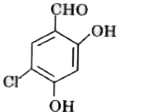Complete the following:
CH3−CH2−OHCu−−−→300∘C Solution in Kannada
Step by step video & image solution for Complete the following: CH_(3)-CH_(2)-OH underset(300^(@)C)overset(Cu)to by Chemistry experts to help you in doubts & scoring excellent marks in Class 12 exams.
Updated on:21/07/2023Topper's Solved these Questions
- MODEL QUESTION PAPER 1 FOR PRACTICEBOOK - SUBHASH PUBLICATIONCHAPTER - MODEL QUESTION PAPER 1 FOR PRACTICEEXERCISE - PART C
13 Videos
- MODEL QUESTION PAPER 1 FOR PRACTICEBOOK - SUBHASH PUBLICATIONCHAPTER - MODEL QUESTION PAPER 1 FOR PRACTICEEXERCISE - PART D
25 Videos
- MODEL QUESTION PAPER 1 FOR PRACTICEBOOK - SUBHASH PUBLICATIONCHAPTER - MODEL QUESTION PAPER 1 FOR PRACTICEEXERCISE - PART D
25 Videos
- HALOALKANES AND HALOARENESBOOK - SUBHASH PUBLICATIONCHAPTER - HALOALKANES AND HALOARENESEXERCISE - Questions
42 Videos
- MODEL QUESTION PAPER 2 FOR PRACTICEBOOK - SUBHASH PUBLICATIONCHAPTER - MODEL QUESTION PAPER 2 FOR PRACTICEEXERCISE - PART D
22 Videos
Similar Questions
Write a neat diagram of Blast Furnace annd mention the different temperature zones for the extraction of Iron.
View SolutionA compound formed by the element A and B crystallizes in the cubic structure, where A is at the corners of the cube and B is at body centre. What is the formula of the compound? If edge length is 5Å, calculate the density of the solid. (Atomic weights of A and B are 60 and 90 respectively).
View SolutionA compound formed by the element A and B crystallizes in the cubic structure, where A is at the corners of the cube and B is at body centre. What is the formula of the compound? If edge length is 5Å, calculate the density of the solid. (Atomic weights of A and B are 60 and 90 respectively).
View SolutionWhat are haloalkanes ? Give examples.
View SolutionA compound formed by the element A and B crystallizes in the cubic structure, where A is at the corners of the cube and B is at body centre. What is the formula of the compound? If edge length is 5Å, calculate the density of the solid. (Atomic weights of A and B are 60 and 90 respectively).
View SolutionCH3−CH2−CH2OH∣CH2 and CH3−OH∣OH∣CH3−CH3
View SolutionThe releative rate or acid catalyssed dehydration of following alcohols would be:
(P) Ph−CH3∣C−CH∣OH−CH3
(Q) Ph−CH3∣C−CH2−CH2−OH
(R ) Ph−−CH3∣CH∣OH−CH2CH3
Ph−−CH3∣CH∣CH3−CH2OH
View SolutionThe releative rate or acid catalyssed dehydration of following alcohols would be: (P) Ph-overset(CH_(3))overset(|)(C)-underset(OH)underset(|)(CH)-CH_(3) (Q) Ph-overset(CH_(3))overset(|)(C)-CH_(2)-CH_(2)-OH (R ) Ph--underset(OH)underset(|)overset(CH_(3))overset(|)(CH)-CH_(2)CH_(3) Ph--underset(CH_(3))underset(|)overset(CH_(3))overset(|)(CH)-CH_(2)OH
View SolutionCH3−CH3∣C∣OH−CH3∣C∣NH2−CH3HNO2−−−→Δ?
View SolutionThe IUPAC name for CH_(3) - underset(OH)underset(|)(CH) - CH_(2) - underset(OH)underset(|)overset(CH_(3))overset(|)(C) - CH_(3) is:
View SolutionThe order of reactivity of following alcohols with halogen acids is……….
(A) CH3CH2−CH2−OH (B) CH3CH2−CH∣CH3−OH
(C)CH3CH2−CH3∣C∣CH3−OH
View SolutionThe order of reactivity of following alcohols with halogen acids is _____ (A). CH_(3)CH_(2)-CH_(2)-OH (B). CH_(3)CH_(2)-underset(CH_(3))underset(|)(C)H-OH (C). CH_(3)CH_(2)-underset(CH_(3))underset(|)overset(CH_(3))overset(|)(C)-OH
View SolutionComplete the following reaction.
CH3−CH2−CH2−C∣∣O−CH3HO−CH2−CH2−CH2−OH−−−−−−−−−−−−−−−−−−→H+?
View SolutionName the following compounds according to IUPAC system. (i) CH_(3) - CH_(2) - underset (CH_(2)Cl) underset(|)(CH) - overset (CH_(2)OH) overset(|) (CH) - underset (CH_(3)) underset (|) (CH) - CH_(3) CH_(3)- underset (CH_(3)) underset(|) (CH) -CH_(2) - underset(OH) underset(|) (CH) - overset (CH_(2)OH) overset(|) (CH) - CH_(2) (iii) (iv) H_(2)C = CH - underset (OH)underset (|) (CH) - CH_(2) - CH_(2) - CH_(3) (v) CH_(3) - underset (CH_(3)) underset ( |) C = underset (Br)underset(|) C - CH_(2)OH
View SolutionGive IUPAC names of the following compounds:
(a) CH3−C∣OHH−CH2−C∣OHH−C∣C2H5H−CH2CH3 (b) CH3−C∣OHH−C∣OHH−CH3
(c)CH3C∣OHHCH2C∣CH3HCH2CH2CH2CH3 (d) CH3C∣CH3H−C∣OHH−CH3∣C∣CH3−CH3
(e) CH3C∣OHHC∣OHHCH2OH (f) C6H5CH2OH
(g) CH3CH2CHCH4OH (h) CH3CH2CH2OH∣C∣C6H5CH2CH3
(i) CH3OH∣CHCH2OH∣CHC∣CH3H−CH3 (j)
View Solution
